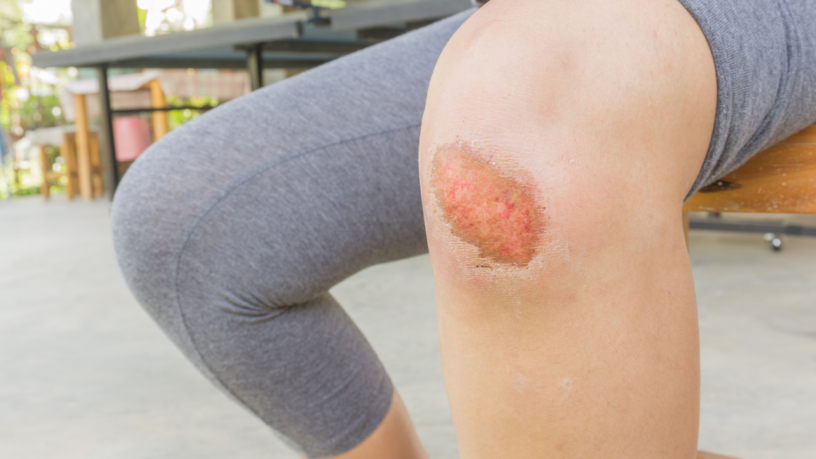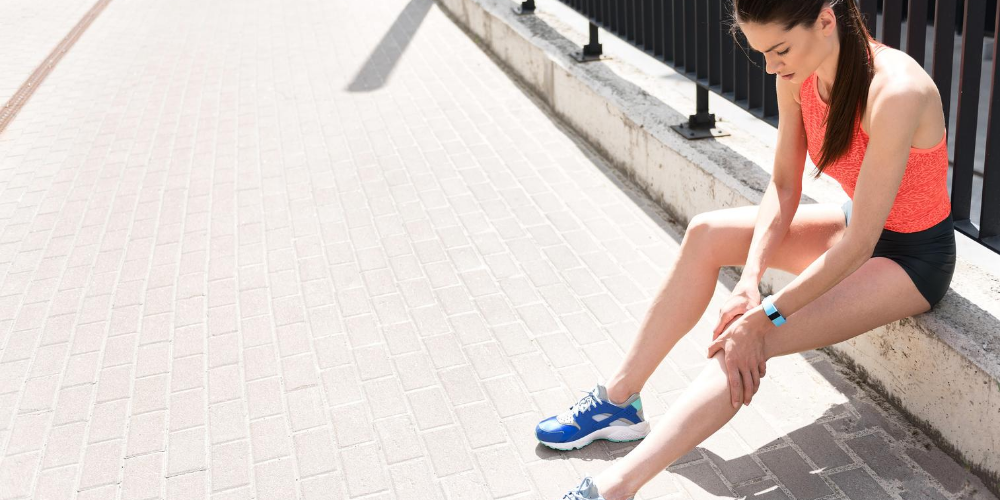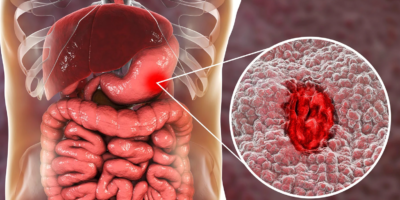We, humans, are thin-skinned but resilient creatures. We heal and move on to new adventures. Basic first aid takes care of small cuts (lacerations) and scrapes (abrasions). A little blood is fine. In fact, it helps clean the wound. If the wound is superficial, pour running water over it. Wash with mild soap and rinse again. Make sure you’ve removed foreign matter, which may infect the wound and, in the case of bits of asphalt, create a sort of tattoo. If the area is likely to come in contact with dirt (or may stain your clothes with blood), cover with sterile gauze and tape down the edges. Change the bandage daily or if it gets wet.


1. Fresh Aloe Vera Gel
How it works: Used since ancient times as a wound healer, the gel of this plant is antibacterial, anti-inflammatory, and soothing. Research shows that it speeds the healing of wounds.
- PREPARATION: 1 Aloe vera plant
- DIRECTIONS: Wash the cut with soap and water. Slice a fleshy leaf from the aloe plant. Using clean fingernails (or a clean knife), open the leaf lengthwise. Rub the gel on the wound.
- YIELD: 01 APPLICATION
- NOTE: Although some studies do show aloe gel reduced pain and hastened healing from surgical wounds, one study found that aloe actually delayed closure of the wound. Discuss with your doctor if you’re having surgery.
2. Honey-Aloe Salve
How it works: Ancient Roman naturalist Pliny the Elder wrote about the virtues of aloe gel combined with honey for injuries. Aloe and honey both are antibacterial, anti-inflammatory, and enhance wound healing.
- PREPARATION:
- 1 tablespoon (15 g) fresh Aloe vera gel or commercially prepared aloe gel (It should be at least 99 percent Aloe vera.)
- 1 tablespoon (20 g) honey
- DIRECTIONS: Wash the cut. Blend the aloe gel and honey. Apply the mix to the wound. Store the remainder in a jar in the refrigerator.
- YIELD: MULTIPLE APPLICATIONS
3. Thyme to Heal
How it works: The oils in this herb have a powerful antimicrobial effect; use the wash to enhance the effects of the mild soap and water you use to clean a cut.
- PREPARATION:
- 1 cup (235 ml) water
- 1 teaspoon (1 g) crushed dried thyme leaves
- DIRECTIONS: Bring the water to a boil in a small pot. Turn off the heat. Add the thyme leaves and let steep until the tea cools to a temperature that is comfortable to the touch. Strain and apply to the wound with gauze or a clean cloth.
- YIELD: 01 APPLICATION
4. Tea-Tree Tincture
How it works: The tea tree (Melaleuca Alternifolia) is a shrubby tree native to Australia. The essential oil from this plant is antimicrobial and anti-inflammatory. It also promotes wound healing. Use this recipe after you have cleaned the cut with mild soap and water.
- PREPARATION:
- ¾ teaspoon tea tree essential oil
- ½ cup (120 ml) warm water
- DIRECTIONS: Disperse the tea tree oil in the water by stirring. Rinse a cut or other abrasion with the liquid.
- YIELD: 01 APPLICATION
5. Scar Squelchers
How it works: Vitamin E has moisturizing properties that help hydrate and soften the skin and lower inflammation. Some research indicates topical applications improve healing from surgical wounds.
- PREPARATION: Vitamin E capsule
- DIRECTIONS: Break open the capsule and rub the liquid onto the healing skin of the wound.
- YIELD: 01 APPLICATION
- NOTE: Alternatively, use a dab of petroleum jelly on the healing wound to keep a scab and the new skin moist. Petroleum jelly is occlusive, which holds moisture into the skin to prevent the scab from cracking open with movement.
6. Backyard Bandage
How it works: Comfrey leaves and roots contain allantoin, which helps the generation of new skin cells. Research shows that abrasions healed faster with topical comfrey relative to a dummy ointment. Use comfrey only on wounds up to 2 inches (5 cm) in diameter. That precaution is due to the small risk of absorption of chemicals in comfrey that, in large quantities, can harm the liver.
- PREPARATION: 1 comfrey leaf
- DIRECTIONS: Wash the wound thoroughly. Cut the comfrey leaf from the plant. (Mature leaves are quite large. If it’s early in the growing season, you might need two leaves to cover the wound.) Rough up the leaf with your fingers and place it against the wound. Wrap a clean, damp cloth around the leaves and the wound. If you can, leave it in place for an hour before removing it.
- YIELD: 01 APPLICATION
7. Butterfly Bandage
How it works: Bringing together the edges of a cut promotes healing.
- PREPARATION:
- 1 strip 1-inch (2.5 cm) wide strip adhesive tape (short enough to effectively draw the wound together)
- Small strip of gauze
- DIRECTIONS:
Fold the strip of tape in half, adhesive side out. At the folded top, cut a diagonal notch on each side; when you open the tape, there should be a triangle on each side, with the points directly across from each other and a small tape surface between the points.
Cut a small piece of gauze. Center the gauze on the sticky side of the tape, between the triangle points. This nonstick surface will be over the wound and must stay clean. Stick one end of the tape on one side of the cut. Pull the other end across the cut so that the edges of the cut come together. For a long cut, use two or more adhesive bandages as needed.
- YIELD: 01 BANDAGE
Fact or Myth?
- YOU SHOULD USE ANTIBACTERIAL SOAP TO WASH CUTS AND SCRAPES. It’s not necessary. Mild soap and running water (and your immune system) handily clear away microbes. Some antibacterial soaps contain triclosan, which is bad for us and the environment. It contributes to antibiotic resistance and disrupts hormone regulation. Lab research shows that it has estrogen-like activity and accelerates the replication of human breast cancer cells.
- POURING CAYENNE INTO A LACERATION WILL STOP BLEEDING AND NUMB THE PAIN. Fact—but it also can hurt when it has to be cleaned out of the wound to stitch it up properly, says Linda’s former medical student Matt Hougen. If the pepper isn’t cleaned out completely, it could interfere with wound healing.
- YOU SHOULD COVER MINOR CUTS AND SCRAPES WITH AN OVER-THE-COUNTER ANTIBIOTIC OINTMENT. Myth. It’s not necessary. Plus, some people develop allergic reactions to the ingredients. If you have a larger laceration or obviously contaminated wound, antimicrobial salves may be indicated. Ask your doctor.
- IF A WOUND IS BLEEDING BRISKLY, APPLY A TOURNIQUET ABOVE IT. Myth. You may risk damaging tissue below the tourniquet. For small wounds, most people wouldn’t consider using a tourniquet. The direct pressure on the wound is enough to stop the bleeding. Tourniquets are reserved for severe injuries to the limbs.
Lifestyle Tip
- If you have a puncture wound, do not apply herbs that speed wound healing. The problem with puncture wounds is that they don’t bleed much and microbes can be deposited more deeply (than with superficial cuts and scrapes). In theory, speeding the closure of the skin can trap microbes.
- Change your bandage daily. To promote healing, you need to keep a cut clean and dry. once the wound has closed, keep it moist to prevent scarring.
- Cleansing wounds with soap and clean, cool water is sufficient for minor scrapes and cuts. Using stronger solutions, such as hydrogen peroxide, rubbing alcohol, or iodine, can actually irritate a cut, harm tissue, and slow down healing.
When to Call the Doctor
- The laceration is on the face or neck or crosses a joint.
- The laceration is more than 1 inch (2.5 cm) long, is deep, jagged, or gaped open.
- Your tetanus shot is out of date.
- Signs of infection develop purulent discharge (some light yellow material is normal and indicates white blood cells are doing their job healing the wound), red streaks moving away from the wound, increased local tenderness and heat, or fever.
- You have diabetes (in which case you’re at higher risk for poor wound healing).






Leave a Reply